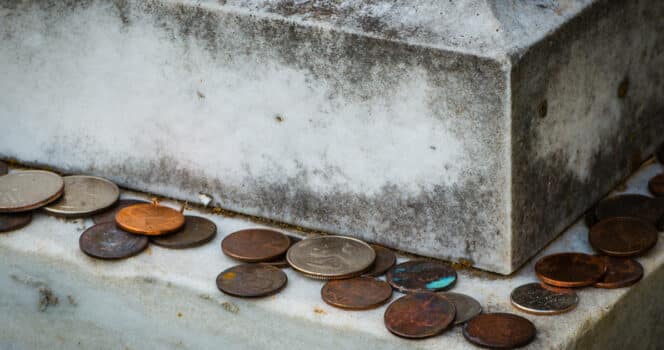We all have different methods for remembering and paying tribute to our loved ones who have passed away.
In today’s society, it should be standard practice to honor other people’s customs when it comes to commemorating the lives of departed loved ones. That may entail some people participating in behaviors or traditions that are foreign to the rest of us, but that doesn’t lessen their legitimacy.
This also applies to gravestones and the manner in which certain families decide to decorate their loved ones’ final resting places. Coin placement on headstones is a popular practice that you have probably witnessed at some point. However, why is this there? And from where did it originate? Continue reading to learn more.
In cemeteries around the United States and overseas, it is common practice to place pennies on gravestones. When I was younger and visiting my grandfather’s tomb, I spotted it for the first time and started to wonder what it was all about.
Fortunately, finding the beginnings online doesn’t need much research. However, in recent years, a number of sources have refuted the long-held belief that the practice dates back to the Roman Empire’s military forces.
Coins on gravestones, however, have a military connection. According to a post on the American Legion website, it is believed to have its roots in the Vietnam War.
“Leaving a coin was considered a more practical way to communicate that you had visited the grave than contacting the soldier’s family, which could devolve into an uncomfortable argument over politics relating to the war, because of the political divide in the country over the war.”
Other motivations for leaving pennies on gravestones include soldiers paying respect to their fallen colleagues and occasionally using the money to purchase a beer for them. According to sources, every coin has a distinct meaning.
For instance, a nickel is left by someone who was in boot camp with the deceased, whereas a penny just indicates that someone was present.
On the other hand, a dime represents time spent in the military together. Then there are quarters, which inform the family that the person who left the coin was there when the loved one passed away.
Ever notice a coin left on a tombstone? Were you aware of its meaning? Tell us in the comments section.
